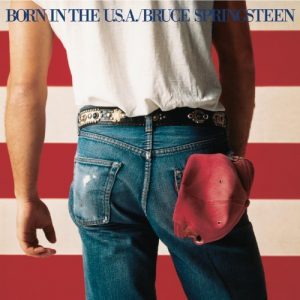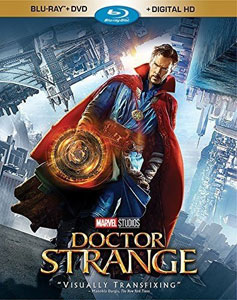This blog series chronicles my first viewing of the complete MCU movie saga. I’ll examine each film under various categories that reflect popular discussion points. Next up is the 14th film, “Doctor Strange” (2016):
STRENGTHS
Fans of “Inception” (2010) never got a sequel, but “Doctor Strange” might soothe the pain: Similar to “Inception’s” dream worlds, when the sorcerers of this film fight, they move buildings and streets, walk on walls and ceilings and generally manipulate the battle arena to their whim.
It’s fun to see cultured thespians Benedict Cumberbatch and Mads Mikkelsen trade wits and blows in this wild environment, while Michael Giacchino peppers mystical Eastern sounds into the heroic score.

“Doctor Strange” (2016)
Director: Scott Derrickson
Writers: Jon Spaihts, Scott Derrickson, C. Robert Cargill
Stars: Benedict Cumberbatch, Chiwetel Ejiofor, Rachel McAdams
WEAKNESSES
Although couched in different terms, this film pontificates about light and dark in a similar fashion to “Star Wars,” and at the end of the day, it doesn’t break new ground. Actually, it underexplains the problems with tapping into dark magic.
Is Tilda Swinton’s Ancient One wrong for keeping herself alive by siphoning energy from the Dark Dimension? Despite dire talk from her assistant Mordo (Chiwetel Ejiofor) about “a price to pay,” it doesn’t seem like she has hurt herself or others by doing so.
HEROES
Doctor Stephen Strange (Cumberbatch) – a rare MCU character whose real name is also his superhero name (see also: Thor) — is an arrogant successful person in the vein of Iron Man and TV’s Dr. House when the film begins.
His hero’s journey isn’t about mastering his chosen field of medicine, but about improving other things about himself – in a broad sense, being less of an a**h***. His photographic memory allows him to master magic as quickly as he climbed the medical ranks.
VILLAINS
Kaecilius (Mikkelsen) wants to bring Earth into the Dark Dimension – where there is no time as we know it — thinking it is mankind’s destiny to be free of the shackles of time. He’s a clichéd villain who knows what’s best for everyone, but Mikkelsen makes him enjoyable to watch.
Although a good guy through most of this movie, Mordo emerges as the likely sequel villain in the post-credits scene. He steals the power of Jonathan Pangborn (Benjamin Bratt), who is using magic to be able to walk, claiming Pangborn has “stolen” that energy. But who did he steal it from? Similar to Ejiofor’s “Serenity” villain, Mordo appears to be growing into a dangerous zealot.
WOMEN
“Doctor Strange” features two strong female characters operating in decidedly different realms: The Ancient One is Doctor Strange’s Yoda, and Rachel McAdams’ Christine Palmer is his fellow surgeon and the typical comic-book girlfriend who supports the superhero. Still, the film fails the Bechdel Test, as no two women speak to each other.

MIRROR TO REALITY
In its opening act, “Doctor Strange” flirts with the idea of cutting-edge medicine as a way for Strange to heal his shaky hands, the result of a car accident. When all avenues are exhausted, he travels to meet the Masters of the Mystic Arts in Nepal and the film moves beyond the boundaries of our everyday reality.
BEST ACTION SCENE
Strange, Kaecilius and the Ancient One fight in a New York City that continually changes shape, structure and perspective as the three sorcerers work their magic. Even the folks behind “Inception” (assuming they aren’t the same folks) likely said “nicely done.”
BEST COMEDIC MOMENT
As he settles into his room at the monastery, Doctor Strange receives a slip of paper from Mordo and asks if it’s his mantra. “No, it’s the WiFi password,” Mordo explains. “We’re not savages.”
WORLD BUILDING
In a throwaway line in “Captain America: The Winter Soldier,” Stephen Strange is mentioned as being on Hydra’s threat list, which is odd considering he hasn’t had his hero’s journey yet at that point. Either he’s just that good of a surgeon, or these films aren’t as much in chronological order as I assume.
In “Doctor Strange,” we learn that the Masters of the Mystic Arts control three sanctums – above New York, London and Hong Kong – which guard against incursions from the multiverse. This, along with the fact that they hold an Infinity Stone, seems like it will play into future films, although I have no idea how.
FINAL THOUGHTS/EXPECTATIONS
“Guardians of the Galaxy” expanded the MCU to outer space, “Ant-Man” introduced smaller scales down to the quantum realm, and now “Doctor Strange” brings us the multiverse and the attendant magic that sorcerers tap into.
I expect all of these things will come into play in future MCU epics. “Doctor Strange” itself deserves credit for balancing its heady concepts with spectacular visuals, good performances and dashes of humor.

